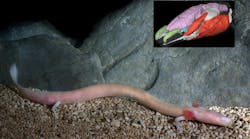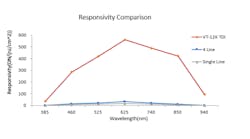FEBRUARY 15--According to DisplaySearch, a flat-panel-display market research firm, the organic light-emitting diode (OLED) display market will be a $2.5 billion market worldwide by 2005. Now, researchers at the Xerox Research Centre of Canada (XRCC), Xerox's imaging materials research center in Mississauga, Ontario, have invented an OLED display that can tolerate temperatures of 70°C to 100°C for 10,000 hours--10 times better than current OLED industry benchmarks. The breakthrough device overcomes an important barrier--the inability to survive high temperatures--to the widespread adoption of OLED-based displays in extreme environments such as automotive or avionic displays.
OLEDs are widely recognized as having the potential to replace liquid-crystal-display screens in laptop computers, mobile phones, airplanes, automobiles, and more. Unlike liquid-crystal displays, OLEDs emit light that can be viewed from any angle, similar to a television screen. Other advantages include that they are expected to be cheaper to manufacture, use less power to operate, emit brighter and sharper images, and "switch" images faster, meaning that videos or animation run more smoothly.
"Companies worldwide are investing millions of dollars in the development and manufacture of OLEDs. Our work could help them overcome current limitations and build display devices that withstand the most rigorous environments," said Herve Gallaire, president, Xerox Innovation Group.
Researchers at XRCC began exploring OLED technology in the mid-1990s because the underlying materials were closely related to an existing area of Xerox work-- photoreceptors. Photoreceptors are the sensitive devices inside xerographic printers and copiers that convert light into electrical charges to make an image. OLED devices are essentially reverse photoreceptors, using electrical charges to make light.
An OLED consists of several thin layers of various organic materials--together just 0.1 μm thick--sandwiched between glass and an electronic cathode that provides the charge. Xerox has found a way in its new OLED to stabilize the ultrasensitive middle "emitting layer" so that it keeps working at high temperatures and doesn't decay or fade out as quickly as current OLEDs.




